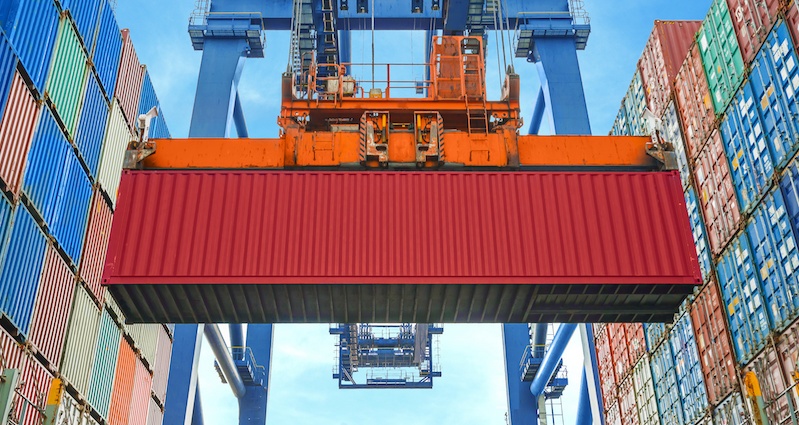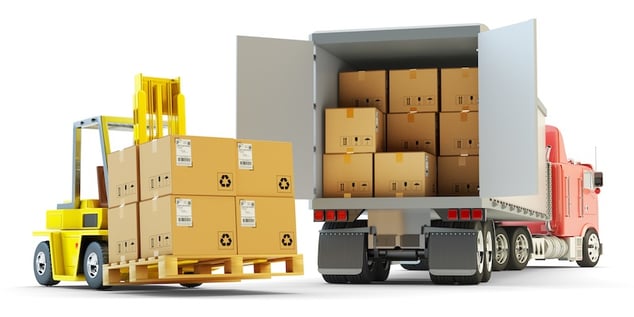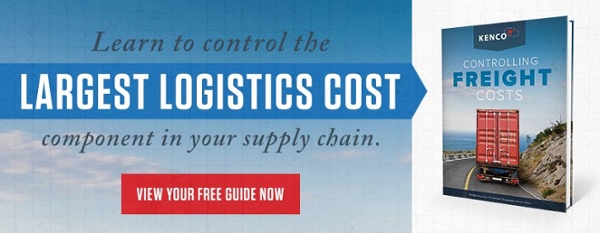
Running a business can be a costly expenditure. You have employee wages, taxes, electricity, water, and other bills to pay. Freight shipping costs account for a large portion of your budget and with a growing and evolving company comes rising fees. To combat the inflation of cost, you may be looking for ways to reduce unnecessary costs while retaining the same integrity of your company. By implementing some simple changes, you can save yourself both time and money.
To help you along the way, here are eight tips to lowering freight shipping costs for your business:
1. Know Your Transportation Options
There are three primary ways to ship your goods: ocean, air, and ground. Ocean shipping is often cheaper than shipping by air, especially when it comes to international goods. If your goods are local, using railroads can be cheaper than using trucks. Mixing the three transportation options can also lower costs and improve delivery times.
Another option is to outsource your transportation—something that can save you from 3-5%. Shippers with a transportation fleet tend to pay 25% premium over logistic transportation companies. When outsourcing, be sure to hire a broker who is reliable and has a good reputation.
2. Consolidate Your Goods
Consolidating your goods in one country can help reduce costs by up to 25% in comparison to unconsolidated loads. The concept is simple: smaller shipments can be consolidated into larger shipments. Big companies like CVS and Colgate have taken to using consolidation programs, and it can benefit your business as well.
Consolidating may take more time, but you can save money, and customers still get the same product in a smaller volume. This helps reduce labor costs and keeps dock bays open. Local Chamber of Commerce offices can be used to find suitable shipping partners.
3. Be Smart About Packaging, Product Design, and Cartons
Packaging only accounts for about 10% of each supply chain dollar, while warehousing is around 25% and transportation is 60%. It should make sense to take design and package specifications in mind when considering your freight efficiency.
Minimize the amount of space each product takes up, and you can get more bang for your buck when shipping.
Shipping materials can be found to meet your needs without breaking the bank.
Another way to pack smart is to reduce the amount of support packaging involved in cargo. Airbags, strapping, blocking, and bracing are all used to prevent goods from knocking around and becoming damaged during transportation. Talk with your carrier ahead of time and determine the optimal amount of packaging for your product. Not only does this save money on supply costs, but it also frees up more space for a greater number of products.
4. Ship More, Less Frequently
Encouraging your customers to buy in bulk, or to place larger orders could help reduce freight costs. Shipping ten pallets in one day is more efficient than shipping two pallets every two days. Try adding benefits like free shipping on orders over a predetermined amount of dollars and give additional benefits to encourage buying in bulk. If you’re working with retailers, the same concept holds. Give them extra incentives to order in bulk to save on overall costs and run a more profitable business.
5. Utilize a Load Board
Load boards can also be beneficial to reduce costs in your business. If you have a one-off shipment, look around for a carrier who can carry your product as backhaul. Carriers like having backhaul since it helps bring in money for what would otherwise have been empty miles for them.
If you shop around enough, you might even be able to find carriers that will take your shipment for only the cost of fuel and a little extra. Doing this can help save your business between 20-40%. Look around your most frequent ship-to areas to find local carriers to reduce shipping costs. Offering later pickup dates can also increase your odds of finding someone to take on your shipment as backhaul.
6. Ship Off-Peak
When scheduling shipments, try considering shipping on off-peak days like Friday. Most customers prefer having their products ready to be stocked in the store by Thursday, so they’re ready for the weekend. This, of course, depends on the type of cargo you carry since something like desktop laptops have a much larger window than something like perishable produce. Mondays are also low-traffic days and can be worth considering, as this can save you 10% versus shipping on peak days.
7. Develop Relationships with Carriers
While shopping around for the next best deal is a standard practice in society nowadays, developing a long-term relationship with your carriers can have added benefits.
Creating a longer-term carrier relationship can create transportation management advantages that benefit the company overall.
The contract also allows the carrier to find other customers in your area that can lead to a more efficient network with a minimum of dead miles. The more customers the carrier has, the more profit they make and the better rates they can offer you.
Contracting a steady lane volume can help build networks and reduce costs as well. The more loyal you are to your carrier, the more loyal they’re going to be to you. When capacity tightens, your carrier will be more likely to focus on the freight of those who have been with them longer and have a steady, or reliable, freight volumes.
8. Know the Tariffs
When shipping internationally, it is important to obtain information on tariffs to save money. Non-tariff trade barriers exist to help reduce the products coming from sweatshops, and crossing these barriers can be expensive.
Final Thoughts
Shipping your products shouldn’t have to cost a lot. Do not fall into the trap of “this is how it’s always been.” Strive to reduce costs and make your business more profitable overall. Choosing the best mode of transportation and using the same carrier and load boards are all simple implementations that can make a significant difference in cost.
Change isn’t always a bad thing, and saving money in the process is always another advantage. Always be sure to keep your packages safe and know how to ship dangerous chemicals properly.



